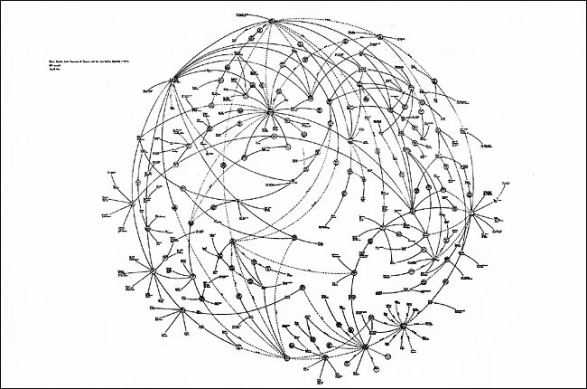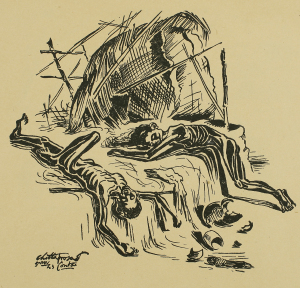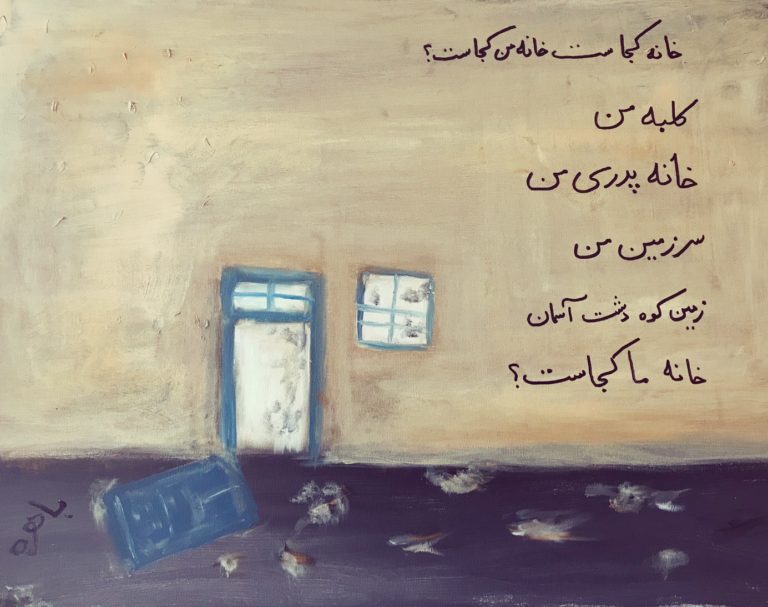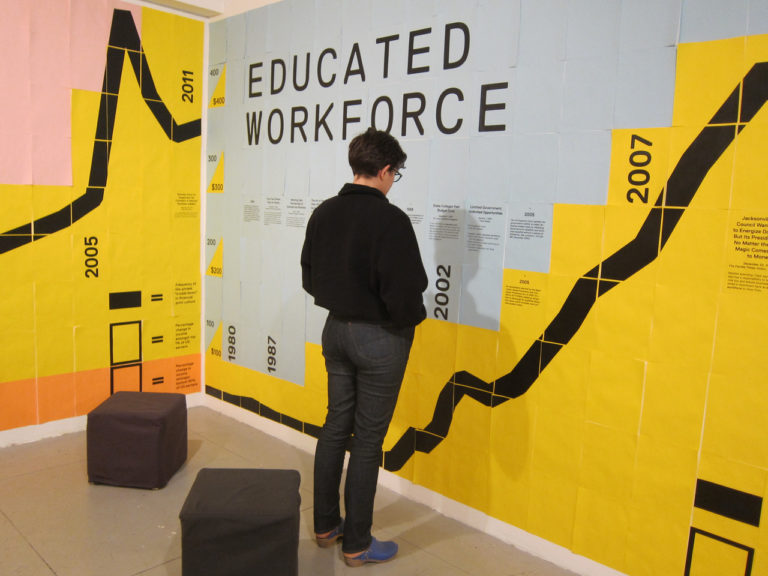This paper begins by observing a tension in contemporary political discourse on the left: against a backdrop of social movements that prioritize “horizontal” organizational structures, there has been a renewed academic debate on the relevance of Lenin and the party form. In this paper I look at Antonio Negri’s recently translated Factory of Strategy: Thirty-Three Lessons on Lenin (a work based on a collection of lectures originally delivered by Negri in the 1970s). I suggest that Negri’s intervention can make a significant contribution to this debate, one that—without rejecting the Leninist project as such—reframes what it would mean to appropriate Lenin for today. By focusing on Lenin’s method of political analysis rather than his specific form of organization, I argue that Negri recovers from within Lenin’s writing a set of categories that can themselves provide the terms for a critique of contemporary Leninism. For Negri, this entails showing how Lenin’s system contains the means by which to theorize its own supersession. In presenting a theory of political intervention that is able to reflexively analyze its historical conditions of possibility, I suggest that Negri’s work on Lenin embodies several important theoretical and methodological commitments. This paper’s concluding section looks at recent work by Jodi Dean and critically interprets her endorsement of the party form in light of Negri’s intervention.
Articles
Peer-reviewed articles in cultural studies.
The Rationalization of Leisure: Marxist Feminism and the Fantasy of Machine Subordination
Critical analyses of domestic technological culture have emphasized the impact of domestic technologies on intensifying women’s labor and reinforcing its privatization within the home, all the while being marketed as laborsaving devices. Drawing from the ways the marketing of domestic technologies framed the home as a space in need of technological administration, this article offers a Marxist feminist analysis of online surveillance during leisure time, examining how the marketing of technologies for both domestic labor and online leisure helps produce relationships between subjects and technologies that double as vehicles for capital accumulation. The article argues that we should look to the history of domestic technological design to understand the ways online surveillance and data collection are used to produce revenue and impact consumer behavior, given that both domestic technologies and contemporary information technologies work to rationalize non-waged time. The article begins with the Taylorization of the home popularized in 1912, followed by the rise of domestic technologies in the 1950s, in order to demonstrate how the ideological framing of the home as a space in need of rationalization informs the marketing of today’s personalization technologies. The marketing of personalization technologies reproduces the racialized and gendered logic of machine subordination that framed domestic technologies for the home in the 20th century. The article concludes with a discussion of how Marxist feminism is a useful theoretical framework for understanding and developing a political response to online data collection, given that both the domestic sphere and online leisure time are traditionally understood to be outside the workday, and therefore supposedly outside the scope of capitalist workplace relations of surveillance and exploitation.
Sex Work and Social Media: Policy, Identity, and Privacy in Networked Publics and Counterpublics
Using the online practices of sex workers as a focal point, this project examines how the public/private dichotomy is governed and complicated within Social Networking Sites (SNS). It concentrates in particular on Facebook and FetLife, arguing that the former functions as a normative public and the latter as a counterpublic due, in part, to the differing regulations each site implements regarding sex work. The project centers on a qualitative study of the rhetorical strategies online sex workers use to self-identify and self-advocate, as well as the tactics they employ to maintain privacy and avoid the phenomenon of “context collapse.” Through the results of this study, I discuss the theoretical and practical implications of end user cyber security tactics, considering the scholarship on digital surveillance and privacy. In addressing these strategies, it underscores the importance of privacy specifically for vulnerable populations of digital publics.
When Shock is No Longer Shocking: The Role of Seduction in Revitalizing Benjamin’s Dialectical Image Under Late-Capitalist Conditions
Walter Benjamin’s conception of the dialectical image provided a strong foundation for the development of political art during the first half of the twentieth century. However, with the rise of late capitalism and its attendant reorganization of our experience of shock, culture, and history itself, the concept must be reevaluated. This is so not least because, whereas Benjamin operated on the presumption that shock had a kind of self-evident revelatory power, we now occupy a field in which shock is no longer shocking. Through a reconsideration of the contributions made by artists Mark Lombardi and Cindy Sherman, I show how Benjamin’s concept might be saved by strategies of epistemological seduction that operate, not as substitutes for shock, but as a concrete strategy for revitalizing our capacity to experience it.
Aestheticizing the City Through Storytelling and Walking: Dublin’s 1916 Rebellion Walking Tour
The main concern of this article is situated in the theatrical experience of the 1916 rebellion walking tour as a broader mode of aestheticizing performance, focusing on the ways it traces the process of the tour to ask what the appeal is for international tourists in experiencing often tragic historical events through the use of performative strategies, namely, acts of walking and storytelling. By employing Walter Benjamin’s notion of storytelling and Michel de Certeau’s approach to the walking, this article intends to explore how the 1916 walking tour as a cultural practice rearranges and recreates the Dublin landscape, and how these new meanings are constituted aesthetically beyond their entertainment value. Furthermore, by placing this tour as performative genre, this article investigates how this historic event is embodied by the guide, perceived and transformed by tour groups, thereby creating tourists’ kinesthetic empathy during the tour, by way of the guide’s storytelling with their walking. In doing so, this article will offer a broader context of staging this historical memory that commemorates past events by way of physical engagement with this tour.
Disruptions—An interview with Jacques Rancière
This interview concerns the premise of ‘aesthetics’, as a certain regime of identification, which intervenes within the domain of ‘politics’ and ‘history of art’, as configured in the ideations of Jacques Rancière. From this general premise the discussion provokes us to particularly re-configure the concept of ‘modernism’ in art that is not solely defined through simplistic comparisons with ‘post-modernism’. Instead, a re-configuration of ‘modernism’ lets us reconsider the ‘Avant Garde’ project from the methodology of an ‘aesthetic community’ formulated during the French revolution existing still in the texts of the young Marx of the 1840s. The logic of representations in art moves beyond the objective structures of ‘Dialectical Reason’, and instead gets aligned to the aesthetic logic of being spatio-temporally ‘surplus’. Furthermore, it is the aesthetic logic that introduces the heterogeneity of political symbolizations that underlines a multiplicity of process as against a distinct strategy linking theory and practice thus even challenging a global rationality of defining ‘what is art?’ (Art History) and ‘what is politics?’ (Politics). It is based upon these contingent reversals of the signification of the world, of trying to identify the singular points of disruptions connecting to or not connecting to make a whole, that the interview concludes with questions on the multiplicity of possibles.
Killer Drones, Legal Ethics, and the Inconvenient Referent
I offer a close reading of the legal and political discourses by means of which the United States government recently has sought to legitimate its use of weaponized drones to carry out targeted assassinations of suspected anti-U.S. combatants abroad. Situating my analysis in the context of philosophical approaches to the problem of truth and linguistic reference, I examine official government speeches, legal documents, and reports of civilian casualties. My semiological critique of these texts is carried out both within and against the “humanitarian” framework of just war theory, my dual approach being necessitated by the twofold strategy of the government’s justificatory rhetoric: on the one hand, the government’s public discourse distorts the accepted meaning of certain unambiguous and pragmatically functional legal signifiers (the jus ad bellum use of terms such as self-defense, imminence, and necessity, for example); on the other hand, it exploits the uncertainty that is endemic to some of those very same terms (necessity and proportionality in particular) when they are used to refer to the jus in bello quantification and valuation of incommensurable variables—of, typically, a particular number of civilian casualties relative to the amount of “military advantage” to be derived from the attack that “unintentionally” produces those casualties.
Troubling the Home/Land in Showtime’s Homeland: The Ghost of 1979 and the Haunting Presence of Iran in the American Imaginary
In my close reading of the drama series Homeland, I illustrate how the divisive pull between “fascination and contempt, desire and disgust” as well as the “simultaneous embracing and disavowal” that cultural critics argue define Iranian Americanness become embodied in the character Fara, a young Muslim Iranian American woman recruited into the CIA for her language and technical skills. This essay asks, among other questions: what does it mean to have anxiety over your birthplace or ancestral homeland? What does a “simultaneous embracing and disavowal” do to a person over time? I argue that as a consequence of how her body is read, Fara is continually denied access to a home and a land and ultimately becomes discarded after performing her role as an agent of the state apparatus. In addition, this essay considers how the ghost of the Iranian hostage crisis of 1979 is frequently invited to speak as an origins myth for contact between the US and Iran that subsequently shapes the lived realities of Iranian Americans nearly forty years later.
Dance, Real Estate, and Institutional Critique: Reconsidering Glorya Kaufman’s Dance Philanthropy in Los Angeles
Glorya Kaufman, a philanthropist with a keen interest in dance, has given significant financial resources in recent years to support dance at universities and theaters in Los Angeles. Kaufman’s dance patronage is enabled by a fortune amassed by her late husband. Along with Eli Broad, Donald Bruce Kaufman co-founded Kaufman & Broad in 1957, which became a major purveyor of housing subdivisions in the United States and abroad. In this article, I contextualize Kaufman’s philanthropy within the processes that generated her wealth and the economic role that suburbanization played in the post-war period. In distinction to celebratory narratives that extol patronage for dance, a Marxist analysis of Kaufman’s philanthropy reveals the material connections between concert dance and real estate development. By de-obscuring the source of Kaufman’s wealth, I show how dance funding is bound up in the history of white flight, urban redevelopment, and real estate schemes in Southern California. Practices of institutional critique might prove useful for rethinking Kaufman’s gifts and the political functions of dance patronage.
Indigenous Cosmopolitanism: The Alaska Native Heritage Center
The Alaska Native Heritage Center (ANHC) is a living heritage center located in Anchorage, Alaska. Although there are many tourist destinations in Alaska, Denali National Park for example, Anchorage should be thought of as the cosmopolitan center of Alaska, its largest and most populous city. The Alaska Native Heritage Center is an expansive site with indoor and outdoor components focusing on history and contemporary culture. The Heritage Center was initiated and curated by Alaska Natives as opposed to anthropologists or historians. The site as a whole can thus be understood as authored by Alaska Natives. The visitor experience, story of the center, and location provide many ways to bridge the site with the concept of cosmopolitanism. As I have experienced the site as a visitor, I will consider the center in relation to the notion of cosmopolitan curiosity, particularly in conjunction with scholar Natasha Eaton’s concept of cosmopolitan nostalgia. The ANHC serves as symbol of contemporary self-definition of Indigenous peoples. By placing the center in Anchorage, the Heritage Center founders were making a conscious choice to share their history and culture with non-natives. This enacts their sense of belonging in the world relating to cultural theorist Anthony Kwame Appiah’s central thesis of cosmopolitanism in Cosmopolitanism: Ethics in a World of Strangers (2006). Although not everyone has the opportunity to visit Alaska, those who do are likely to travel to Anchorage and once there to visit the ANHC. Due to colonization, indigenous peoples of the United States make up an extremely small percentage of the population, yet by no means are they—as outmoded anthropological monographs attest—‘disappearing’. By highlighting a contemporary example of indigenous living culture, I would like to consider how cosmopolitanism as a concept can incorporate this Indigenous mode of being into its larger global story.
Art as Protest, Cooking as Resistance: Everyday Life in Taipei’s Housing Rights Movement
From 2010 to 2013, during the height of Taiwan’s housing rights movement, Participatory Art became instrumental in defending the right to the city. In this housing rights movement, artists, students, residents, and other professionals united to challenge neoliberal urban development. Two protest art projects in Taipei, Operation Little Barbarossa and Cooking at the Front Line, illustrate the interdisciplinary, trans-social strata collaboration. The artworks responded to encroachment on land and estate by the Taipei City government and real estate developers. The art forms employed included performance art, dance, writing, sculpture, graffiti, graphic design, and photography. Through everyday acts, such as cooking and driving, the two works lent voice and visibility to marginalized residents. The language and imagery of these protest gestures produced a theatricality that was at once jovial, amiable, critical, and contentious. The coexisting confrontational and convivial tones also encapsulate Taipei’s housing rights movement, in which the Taiwan Alliance for Victims of Urban Renewal exercised a central role. This article integrates findings from archival analysis, interviews, participation observation, and site visits. The content considers the relationship among Participatory Art, social activism, urban planning, and neoliberalism. The author also draws connections between the visual and cultural aspects of the featured Participatory Art. The text concludes that Operation Little Barbarossa and Cooking at the Front Line offer a broader and richer interpretation of Participatory Art. They demonstrate diverse adaptations and multiple approaches to facilitating socially-minded, collaborative art. They also confirm Participatory Art’s ability to agitate problematic dynamics in the (re)construction of global cities.
How Makers and Preppers Converge in Premodern and Post-Apocalyptic Ruin
This article investigates how US maker culture affirms values of self-reliance and personal responsibility through its increasing convergence with future-oriented preparation in order to construct a US maker identity differentiated from other making cultures worldwide as an ideological project of white American exceptionalism. I argue that the convergence of contemporary making with apocalyptic preparation in the US articulates making practices as vital for individual survival for apocalyptic futures as well as constructs nonwhite and non-Western geographies as simultaneously premodern and post-apocalyptic sites of ruin. US maker culture, while drawing inspiration from these geographies, suggests that such locales will be unaffected by apocalypse and, thus, cannot prepare for it. Consequently, US maker culture excludes the nonwhite inhabitants of these non-Western geographies from the idealized subjecthood rooted in the do-it-yourself (DIY) ideology and preparatory logic that maker culture endorses.
License to Extract: How Louisiana’s Master Plan for a Sustainable Coast is Sinking It
This article explores the deployment of Louisiana’s highly touted $50 billion, fifty-year Master Plan for a Sustainable Coast, which is often characterized as saving Louisiana’s Working Coast of disappearing marshlands that are home to several major industry sectors, along with migratory flyways, seafood estuaries, and two million residents. As a concept, the Working Coast attempts to signify the importance of Louisiana’s coastal zone to the nation’s economy in order to justify expensive restoration projects. By complicating the euphemism and the extractive logic it signifies, I hope to show that the state’s current approach to slow the disappearance of its coastline in fact rationalizes the very practices sinking it. The Working Coast reifies the state’s fragile marshlands through metrics that can only be realized through continued extraction.
Decommodified Labor: Conceptualizing Work After the Wage
A way to think labor after finanancialization, decommodifed labor refers to an emptying out of the same wage relation that nonetheless continues to structure our lives. “Working hard or hardly working” needs a new conjunction: in an age of decommodifed labor, one finds oneself working hard and hardly working. I suggest that decommodified labor offers cultural critics a form for isolating labor today that takes account of its relation to the wage, that may assist in periodizing the capital-labor relation, and that also highlights financial change alongside labor’s durational necessity under capitalism.
Imagined Immunities: Abjection, Contagion and the Neoliberal Debt Economy
This paper addresses the pervasiveness of contagion as a structure of feeling by putting Maurizio Lazzarato’s biopolitics of indebtedness in dialogue with Roberto Esposito’s insight that debt is the very condition of both community and its dialectical opposite, immunity. Where Esposito does not sufficiently engage the role of financialized or neoliberal capitalism within the contemporary crisis, Lazzarato develops a Marxian account of debt that complements Esposito’s “immunitarian biopolitics,” revealing it as an intrinsically capitalist one, and allows us to ground it in contemporary power structures through Marx’s figure of M-M’.














